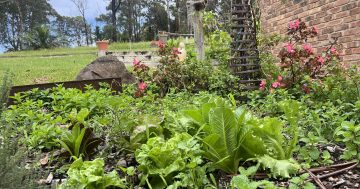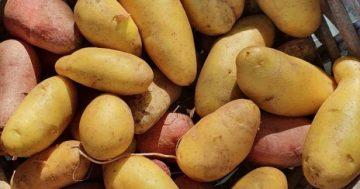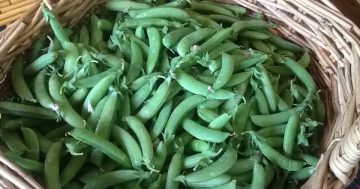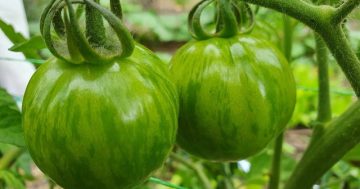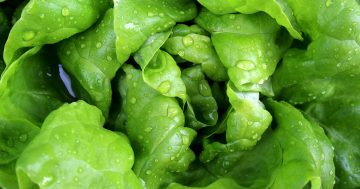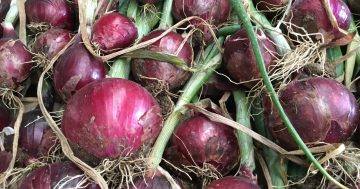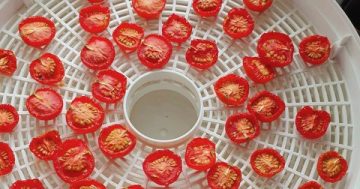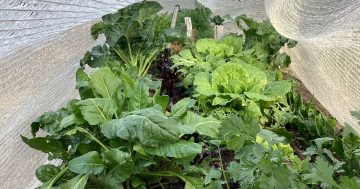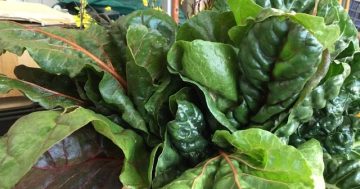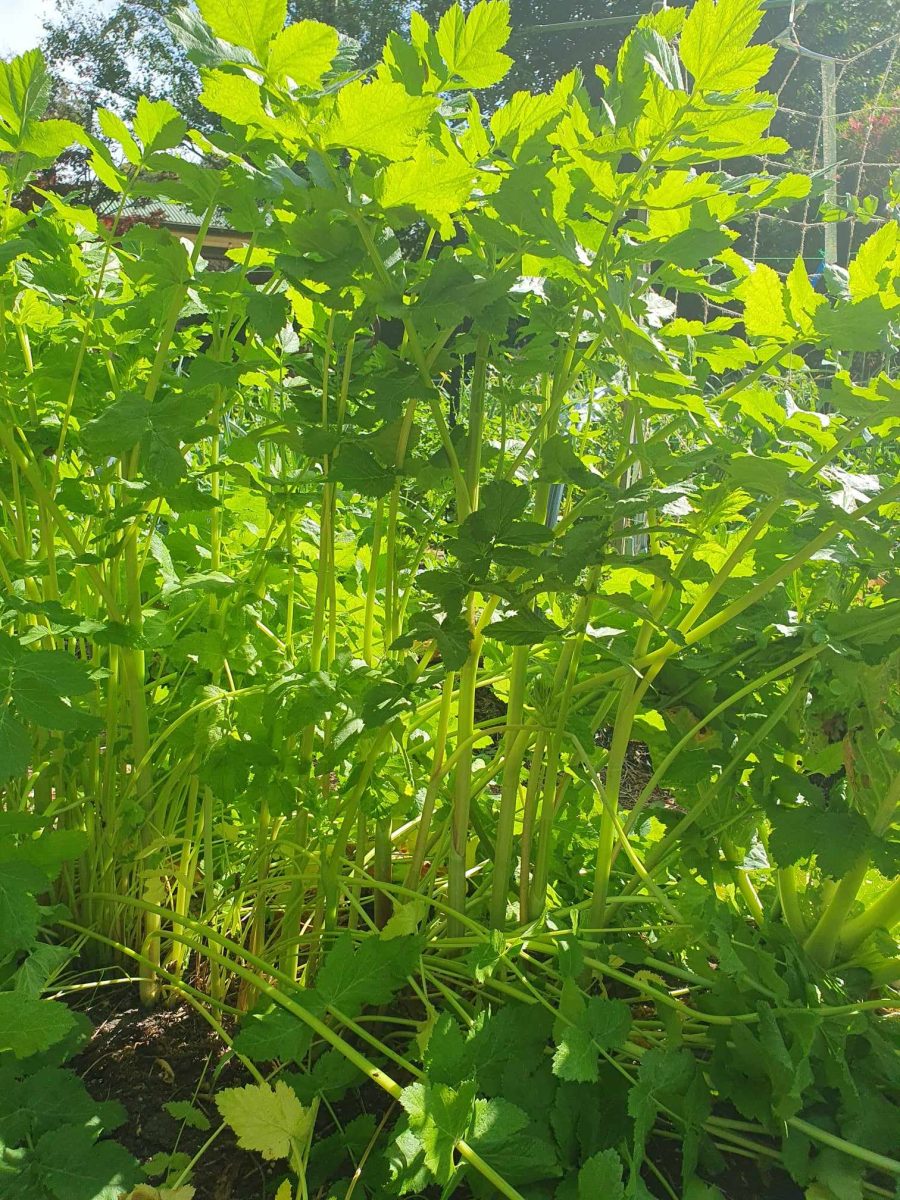
Parsnips going to seed. Photo: Wynlan House.
What a dramatic end to spring!
The near-drought and heatwave conditions experienced by much of our cool/cold climate region certainly pushed quite a few vegetables to bolt to seed, including carrots, parsnips, leafy Asian greens, silverbeet and spinach.
However, there is nothing to be done but continue with our summer planting. As for the weather, our friends at the BoM are predicting warmer day and night temperatures overall for summer, with increased risk of storms and heatwaves, accompanied by a return to more usual rainfall patterns, at least in the more northerly parts of the region.
Unfortunately, there is an area of the region around ACT and through Victoria where dry conditions may continue.
The implications for food growing in our region if temperatures continue to get warmer are many.
We need to find more heat-tolerant varieties of our favourite summer greens. While the cooler summer temperatures of the past allowed for ongoing plantings of cauliflower and broccoli, a warmer summer this year may mean holding off on planting these brassicas until late summer.
There is research that is proceeding worldwide to nurture and create more heat-tolerant varieties of all food crops.
Vegetables respond poorly to high temperatures because they are succulent by nature. All the vegetable families react to higher temperatures with retarded growth and development and lower yields.
Interestingly enough, while many governments and their citizens have been in denial about global temperature rise, much of the agricultural industry has been focused on preparing for it and Australian institutions such as Hort Innovation are helping growers move towards adaptive strategies and tactics and more adapted varieties of vegetables.
As backyard growers, we will benefit as these new, more heat-tolerant varieties appear, albeit slowly, on the seed and seedling market.
In the meantime, we can certainly start to change our growing practices, such as planting times and succession planting strategies and try to identify more adaptable varieties. Most of all, we can keep learning from our experiences.
So, what can we grow this summer with likely warmer-than-average day and night temperatures and a slightly longer growing season and average to below-average rainfall?
Beans are a great choice, as they come in so many forms.
Most of us generally grow beans as ‘green’ beans to eat fresh, and we talked about the various types in the November Kitchen Garden.
However, there are also a huge number of beans (or legumes) that are grown as ‘shelling’ beans where the flesh of the bean is discarded while the seed inside the flesh is eaten. They can be eaten fresh, like peas (shelling peas), or subsequently dried and stored.
There are about 16,000 types grown all over the world in different sizes, shapes, colours, and textures and are generally referred to as pulses. A few of the most common of these pulses are soya beans, lentils, cannellini beans (or white beans) and kidney beans.
Pulses are incredibly versatile, have great nutritional value and can be prepared in many ways: canned, cooked, dried, frozen, ground into flour, or split.
In our cool climate, when considering pulses to grow for drying, it is important to get varieties that reach maturity under 100 days. The majority of summer legume species do not cope with frost.
Bush varieties of kidney beans can take between 90 to 100 days to harvest, borlotti beans take 60 to 70 days, and haricot beans take 70 to 85 days.
There are also climbing varieties. The tepary bean, if grown in a light clay or loamy soil, will certainly flourish in the warmer conditions expected this summer. It doesn’t like wet conditions or heavy clay soils but loves lots of heat and sun and not much water.
Another variety to consider is the snake bean (also known as the pea bean, black bean and the Chinese long bean).
If you have noticed increasing humidity in your local microclimate, this could be a terrific choice. When the plant starts to crop, you will need a trellis and good rain or watering.
Don’t forget a good organic snail and slug bait because those critters love this plant. If you are keen to experiment with the legume family this summer, try growing a few of these types for interest.
Seeds are readily available now from online Australian seed suppliers.
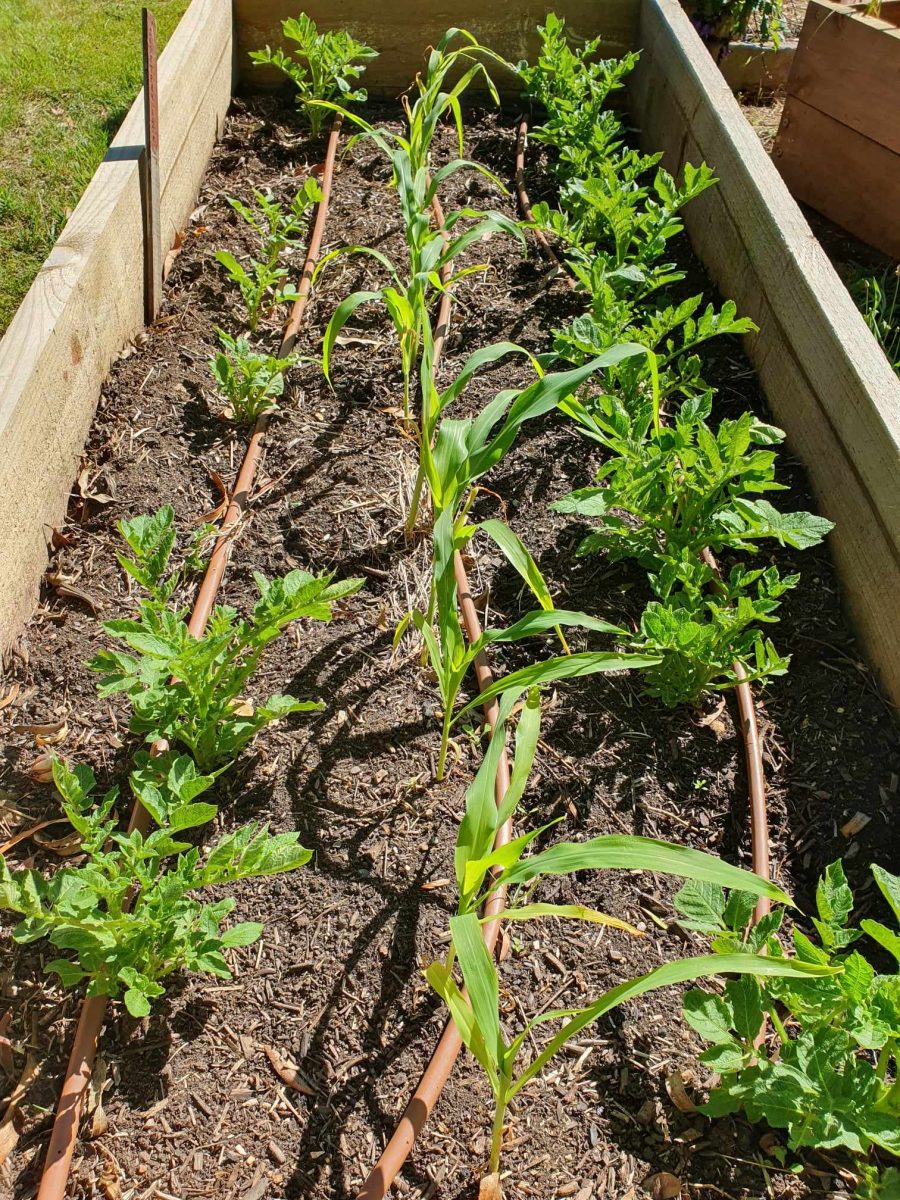
Potatoes and corn have grown 5 cm in a week. Photo: Wynlan House.
While zucchini is always a kitchen garden favourite, why not try other squash types such as white, yellow or green scallopini and the Middle Eastern ball zucchini (with a thicker skin)? They are all heat lovers and can be very prolific. Try one each of a few different types so that you have some variety at mealtime, but remember only one plant of each!
What about trying the variety that is grown for the blossom such as Costata Romanesco? The seed is readily available and the flowers make a delicious meal when stuffed or fried as tempura.
However, the zucchini grows very quickly and will need to be harvested early while there is part of the flower remaining, or you will be overrun with this squash. All these squashes grow quickly from seed, around 40-50 days, so perhaps plant them in succession about 4 weeks apart rather than all at once.
Powdery mildew can be a problem and aphids are attracted to them. There are a number of organic fungicides available and a home remedy using baking soda may help along with removing damaged leaves; an insecticidal soap will slow down the aphids.
Peppers, chilli, tomato and eggplant should thrive too.
We previously grew these in a hot house but now find they survive well in a sheltered, open part of the garden. Fingerling eggplants are more heat tolerant, but they must be well watered to survive temperatures over 28 °C. The same applies to peppers.
We usually recommend growing the long, slender varieties of pepper, such as yellow banana pepper, as they are quicker to ripen. Generally, bell peppers ripen and grow too slowly for our climate. However, banana peppers or bull horn should do well.
Likewise, with eggplants, the large varieties are too slow, while the fingerling or smaller varieties should have time to mature.
Sweet corn, of course, should thrive in warmer summers but should be well watered.
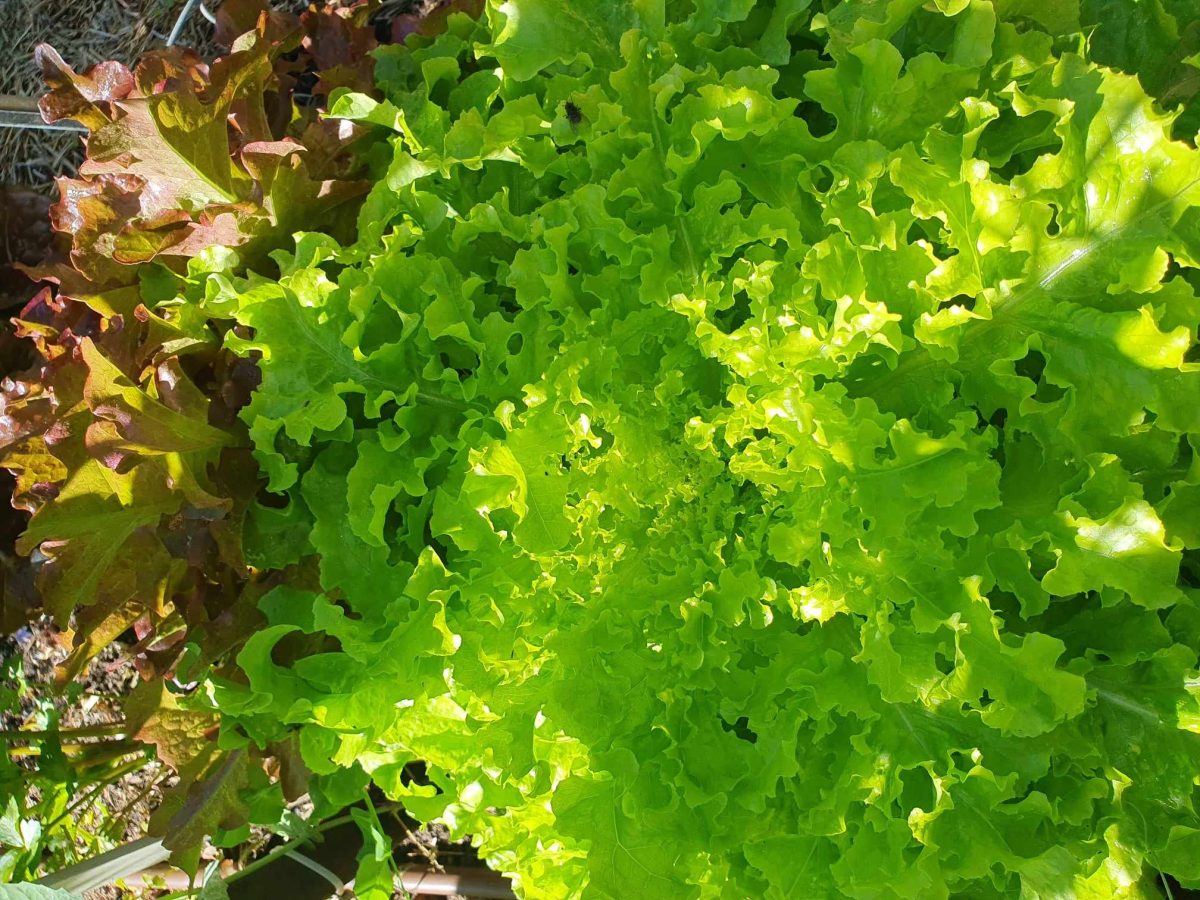
Lettuce might need some protection from the harsh summer sun. Photo: Wynlan House.
Leafy greens that are relatively heat tolerant are collards, edible red leaf amaranth and butter lettuce. Planting butter lettuce close to collards will give a little protection from the sun as the collard leaves grow and spread. Otherwise, perhaps a spot that is in the shade from mid-afternoon or growing under shade cloth.’
While many greens and lettuces are heat tolerant, they are still vulnerable to high temperatures, so they do need some protection. If you haven’t grown or eaten them before. Collards are a delicious brassica green, somewhat like kale. They are quick growing, but just keep the organic bug spray ready because the cabbage caterpillars will love them.
Bronwyn Richards and Helen Lynch run Wynlen House Artisan Village Farm and Learning Centre, a small village organic market garden in Braidwood, NSW. Since 2006 they have grown and sold fresh vegetables, eggs, preserves and garlic, and teach others to do the same.
Original Article published by Bronwyn Richards on Riotact.




